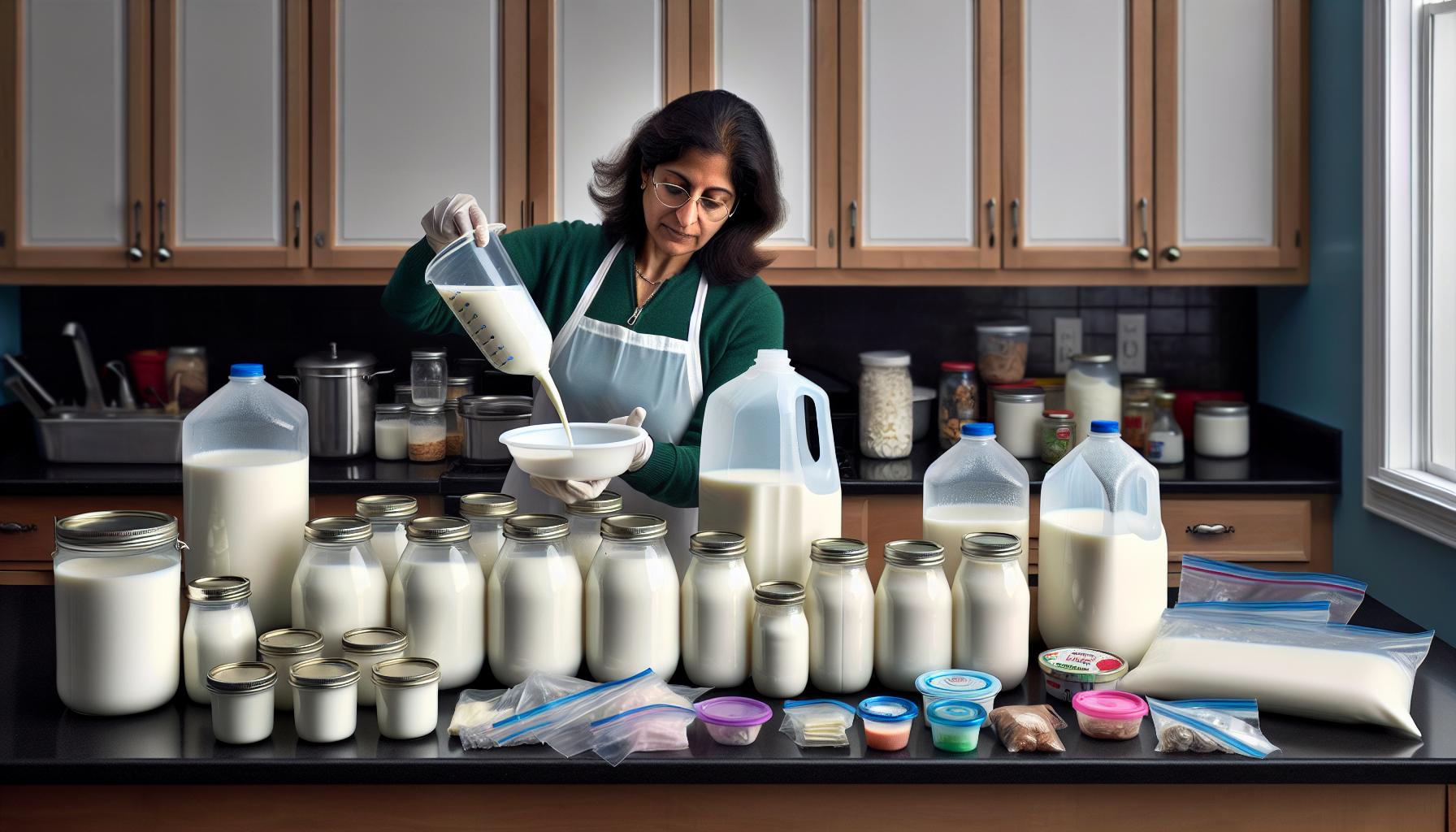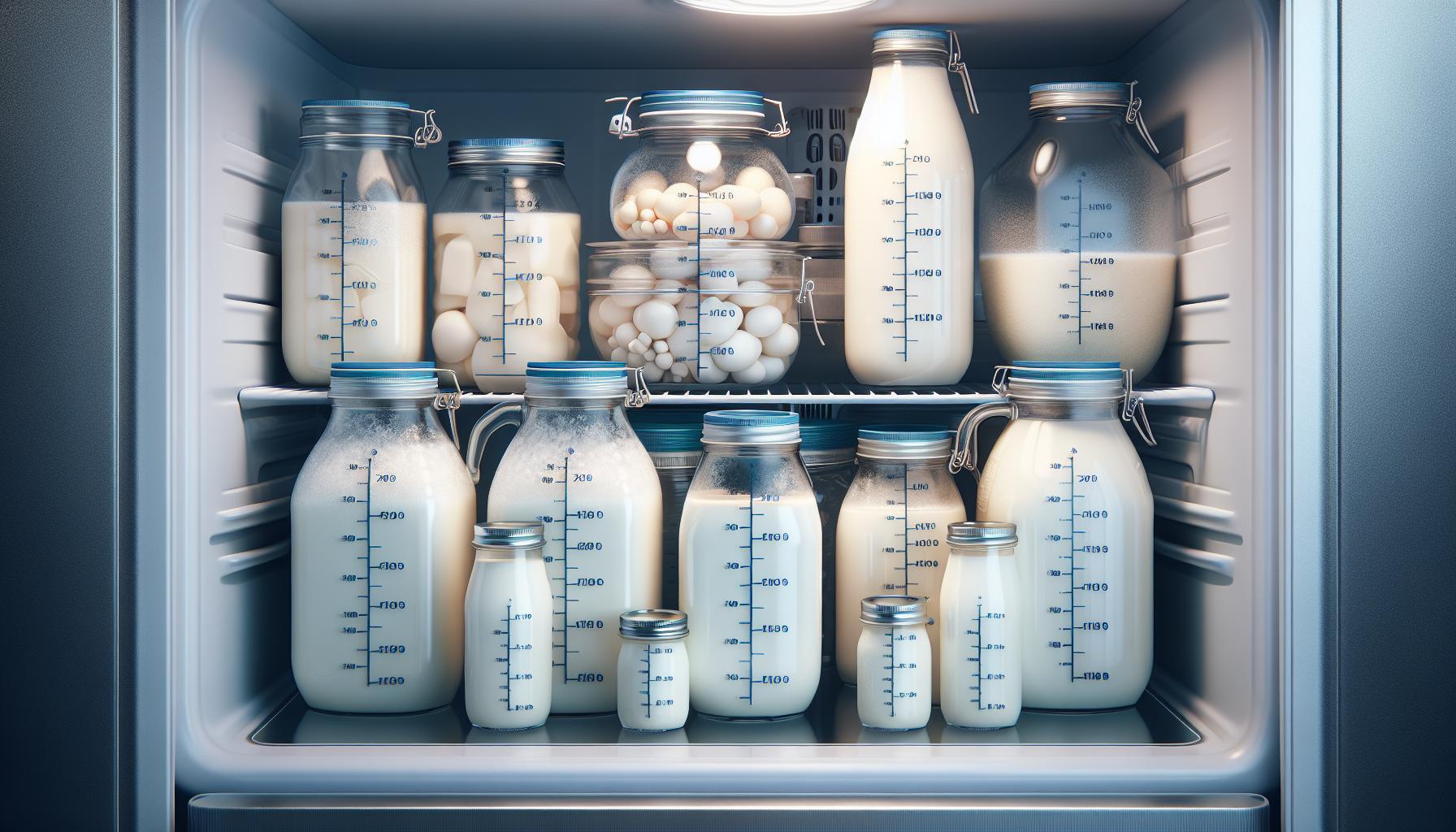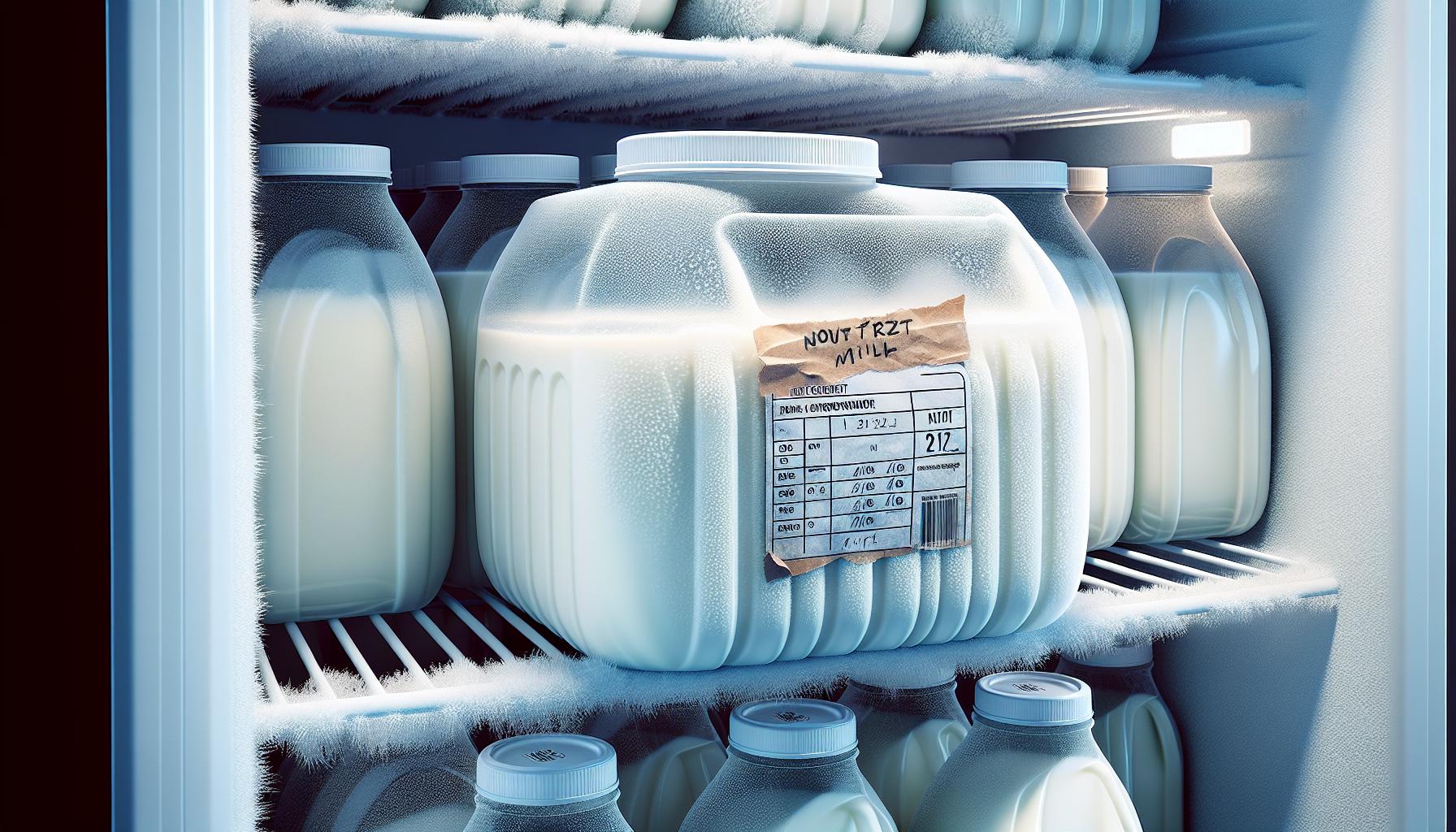Freezing raw milk preserves its nutritional benefits while extending its shelf life for months. This time-tested preservation method helps homesteaders and families make the most of their fresh milk supply without compromising its natural qualities.
Raw milk can be frozen for up to 6 months when stored in appropriate containers with adequate headspace for expansion. The process maintains most nutritional benefits while slightly altering the milk’s texture due to fat molecule separation.
While the concept might seem straightforward freezing raw milk requires specific techniques to maintain its quality. Understanding the proper methods for container selection preparation and thawing ensures the best results and prevents waste. Whether storing surplus from a local dairy or preserving homegrown milk these guidelines will help maximize this valuable resource.
“1. Strain fresh milk
Proper straining creates a cleaner milk product for freezing. A fine-mesh stainless steel strainer removes any debris particles bacteria or contamination from the raw milk. Place the strainer over a clean glass container then pour the milk through it in a slow steady stream.
Key straining steps:
- Clean the strainer with hot water before use
- Position strainer securely on container rim
- Pour milk slowly to prevent overflow
- Discard any visible debris caught in strainer
- Rinse strainer immediately after use
Additional sanitation measures enhance milk quality:
- Sanitize all dairy equipment thoroughly
- Clean animal udders before milking
- Cool milk rapidly to 40°F (4°C)
- Use only food-grade stainless steel or glass containers
- Handle milk with clean sanitized hands
This initial straining process creates a pure product ideal for freezing while removing unwanted particles that affect texture quality during the thawing process. The cleaner the milk the better it preserves in frozen storage.
2. Pour into containers

Proper pouring techniques prevent container damage and ensure optimal freezing results. Glass jars require filling to only 75% capacity, creating essential expansion space as the milk freezes. The remaining headspace prevents cracking and maintains container integrity throughout the freezing process.
Plastic containers offer a practical alternative to glass. Remove a small portion of milk from plastic jugs to create an air pocket, preventing container splitting during expansion. Zip-seal bags provide space-efficient storage options while accommodating the natural expansion of freezing milk.
Container options for freezing raw milk:
- Glass mason jars (filled to 75% capacity)
- Plastic milk jugs (with air pocket)
- Freezer-grade zip-seal bags
- Food-grade plastic containers
| Container Type | Fill Level | Expansion Space |
|---|---|---|
| Glass Jars | 75% | 25% |
| Plastic Jugs | 90% | 10% |
| Zip-seal Bags | 80% | 20% |
Pour the milk smoothly into the chosen container using a sanitized funnel to prevent spills. Label each container with the date of freezing for proper rotation. Place containers upright in the freezer, allowing space between them for proper air circulation.
3. Leave 1-inch headspace

Raw milk expands during the freezing process, requiring adequate space in storage containers. A 1-inch headspace at the top prevents container damage from milk expansion. For glass containers, fill to 75% capacity to protect against cracking or breaking. Plastic containers need similar consideration – remove enough milk to create sufficient expansion room.
Here’s a quick guide for headspace requirements:
- Glass mason jars: Leave 2-3 inches from rim
- Plastic milk jugs: Remove 1 cup per gallon
- Freezer bags: Push out excess air, leave 1-inch space
- Ice cube trays: Fill to 80% capacity
This expansion space protects against:
- Container breakage
- Lid displacement
- Milk loss
- Freezer contamination
A simple measurement technique uses the width of a thumb (approximately 1 inch) as a guide for proper headspace. Proper headspace ensures the milk freezes evenly while maintaining container integrity. Place containers upright in the freezer after leaving appropriate headspace to maintain consistent expansion room during the freezing process.
4. Seal and label

Proper sealing prevents freezer burn and maintains milk quality during storage. Close containers tightly with appropriate lids or zip-seal mechanisms that create an airtight seal. Double-check plastic container lids for secure fastening to prevent leaks.
Label each container with:
- Date of freezing
- Volume of milk
- Source of milk (if applicable)
- Expected expiration date (6 months from freeze date)
Use waterproof labels or freezer tape to ensure markings remain legible throughout storage. Place labels on container tops or sides where they’re easily visible. Position labels consistently across containers to create an organized storage system.
Create a first-in-first-out rotation system by arranging containers with older dates at the front. Check seals monthly for integrity while stored. Remove containers with compromised seals immediately to maintain milk quality.
The content focuses on sealing and labeling frozen raw milk containers without overlapping previously covered container selection and filling guidelines. It integrates key details about storage duration while providing specific labeling elements critical for tracking frozen milk inventory.
5. Freeze up to 6 months”
Raw milk maintains optimal quality in the freezer for 6 months from the freezing date. The freezing process suspends bacterial growth while preserving essential nutrients. Storing raw milk beyond 6 months increases the risk of texture changes including graininess separation.
Temperature consistency plays a vital role in preservation:
- Set freezer temperature to 0°F (-18°C) or below
- Store containers away from the freezer door
- Place milk containers toward the back of the freezer
- Avoid temperature fluctuations by limiting freezer access
| Storage Type | Temperature | Maximum Duration |
|---|---|---|
| Regular Freezer | 0°F (-18°C) | 6 months |
| Deep Freezer | -10°F (-23°C) | 6 months |
For extended storage success:
- Monitor freezer temperature with a thermometer
- Check container seals monthly
- Remove any containers with compromised seals
- Rotate stock using first-in first-out method
- Mark containers with freeze date expiration
Raw milk stored at consistent freezing temperatures retains nutritional benefits during the 6-month storage period. Moving frozen containers minimizes the risk of temperature variations affecting milk quality.



